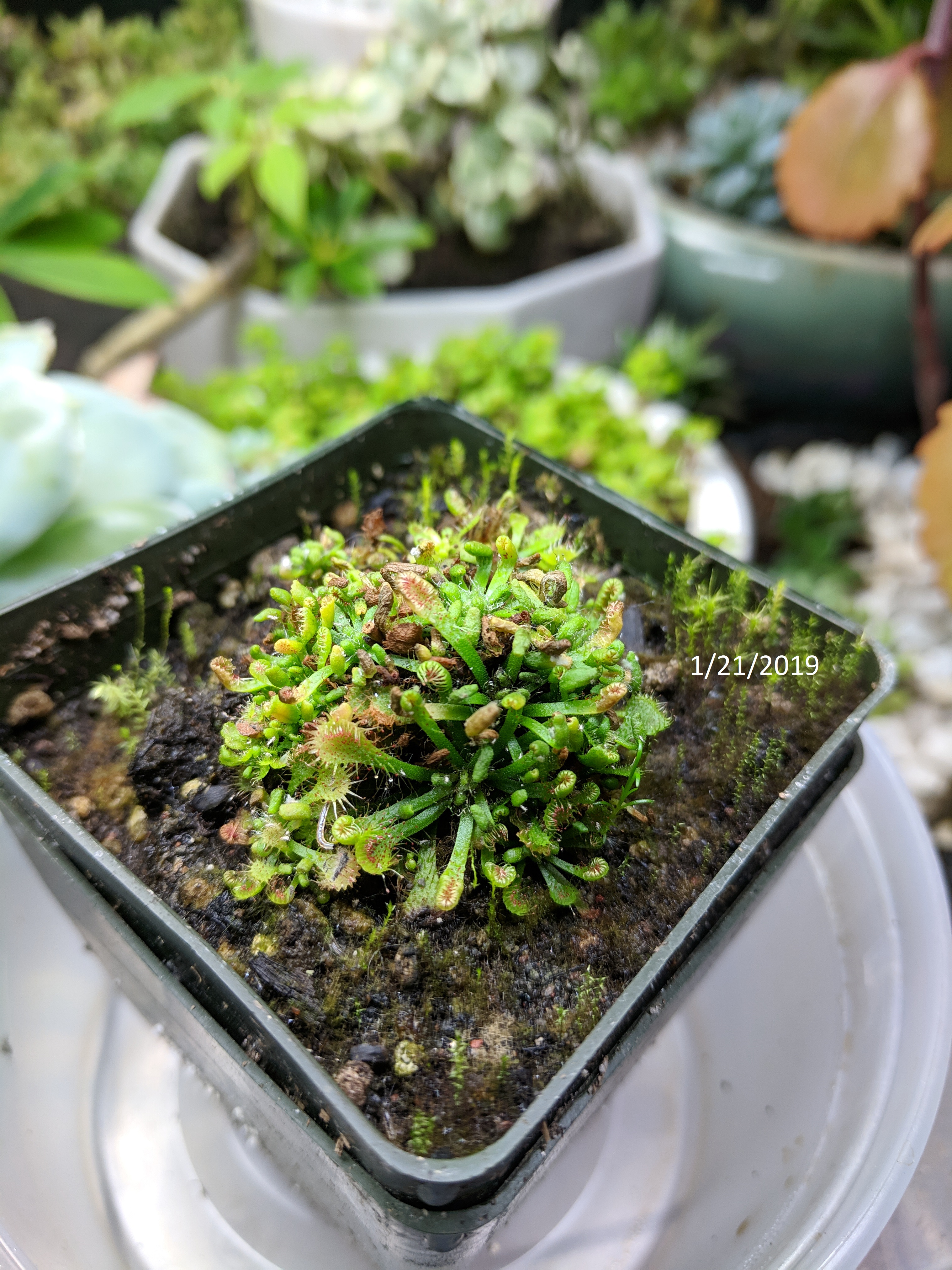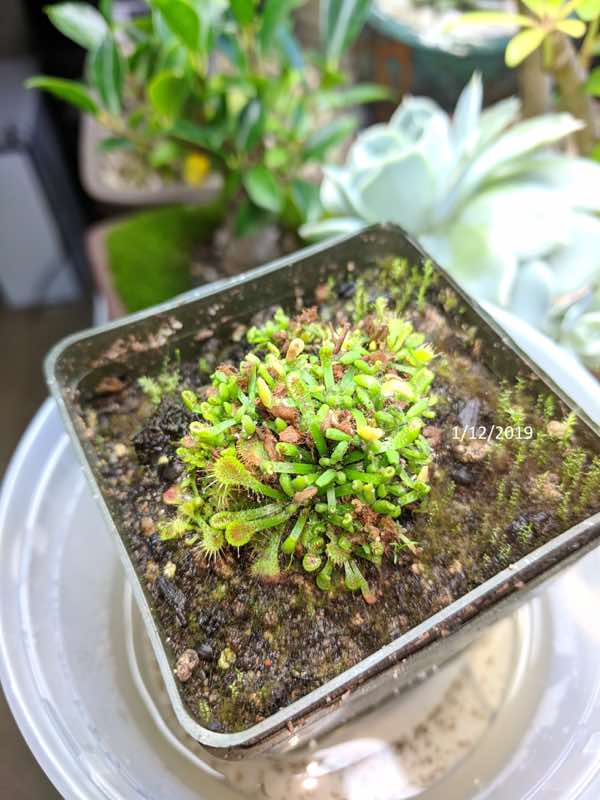January 24, 2023
Q/A #24 - Drosera spatulata with Stunted Growth
QUESTION:
I recently purchased a Drosera spatulata from you guys, but I have been having problems with a different one I purchased from a vendor at the Beaverton Farmer's Market in November. When I bought it, it had good dew and was catching fruit flies successfully. Within a few weeks it had lost almost all of its dew, but was growing many new leaves which remained curled, but it still doesn't look like pictures of dormant Drosera I was able to find on the internet. I am not sure whether this is a cold-hardy variety or tropical. My care for the plant:
- Strong artificial light, indoors next to a window
- Typically sits in shallow (1/4 height of pot) distilled water, and the soil seems to stay very moist. I recently watered from the top to try and pull fresh air into the soil. It is currently not sitting in water in an effort to allow the soil to lose some moisture
- Typically remains under a loose plastic cover to increase humidity around the plant. Cover removed several times a day to allow complete air exchange.
- Still in the vendor's soil, which looks to be made of peat, sand, and perlite.
Could pests be the problem? I have noticed several small translucent worms since I bought it.
(
Submitted in January 2019.)


RESPONSE BY JACOB FARIN:
Lack of dew is often caused by low light levels. But when I examine your leaves, I see redness in the tentacles, so the plant is getting enough light. The leaves also don't seem elongated, which is common in low light conditions.
Another common cause for no dew is a pest, such as thrips or aphids. The leaves, however, don't have the typical appearance of being affected by these pests. Only by inspecting the leaves more closely can we determine if these pests are present.
You did say you saw worms since you bought the plant. Those would likely be larvae of fungus gnats, and they will eat the roots of your plant. Poor root development can also cause a sundew to go dewless.
I recommend repotting your plant into fresh soil. After repotting, spray your plant with neem as a precaution. It's a natural pesticide and is safe to use with carnivorous plants. You can find ready to use solutions at your local garden center. You may need to spray an addition one or two times, 3 days apart, to take care of any remaining pests that hatched from eggs. After a few weeks when your plant produces a new set of leaves, it should look normal again.
•
Submitted in January 2019. The original question and response have been edited for publication.
• With a database of thousands of questions, we will post a Q&A every few days or so.
• To search for similar posts, click on a hashtag below or use the site's search function.
• To submit a carnivorous plant question, visit
Ask the Growers.

